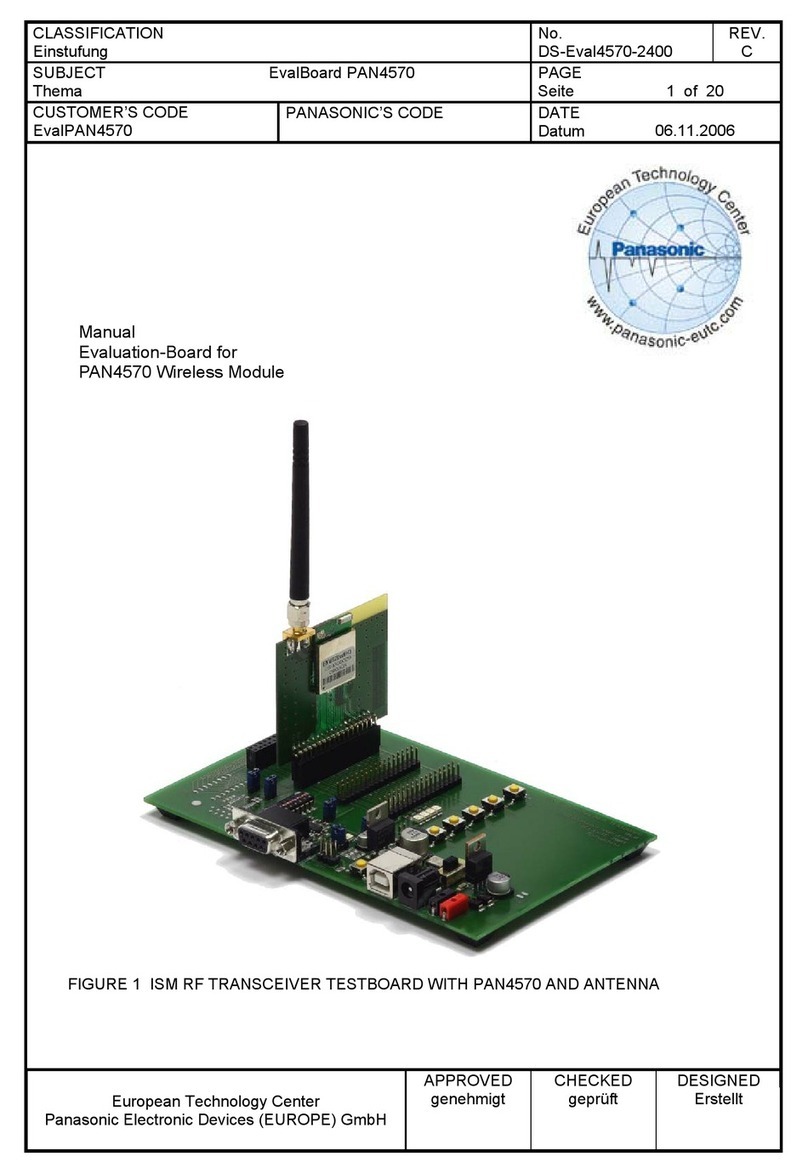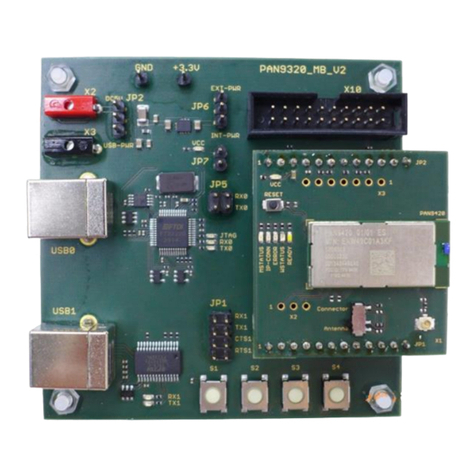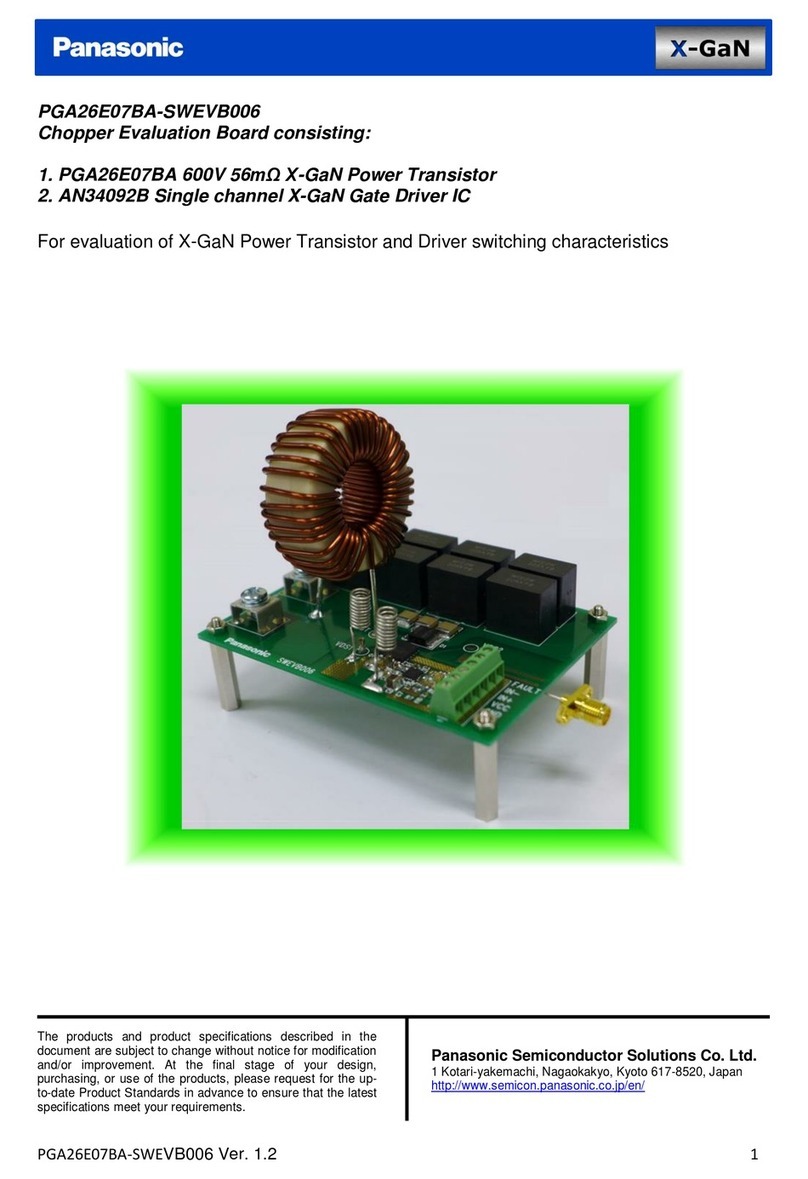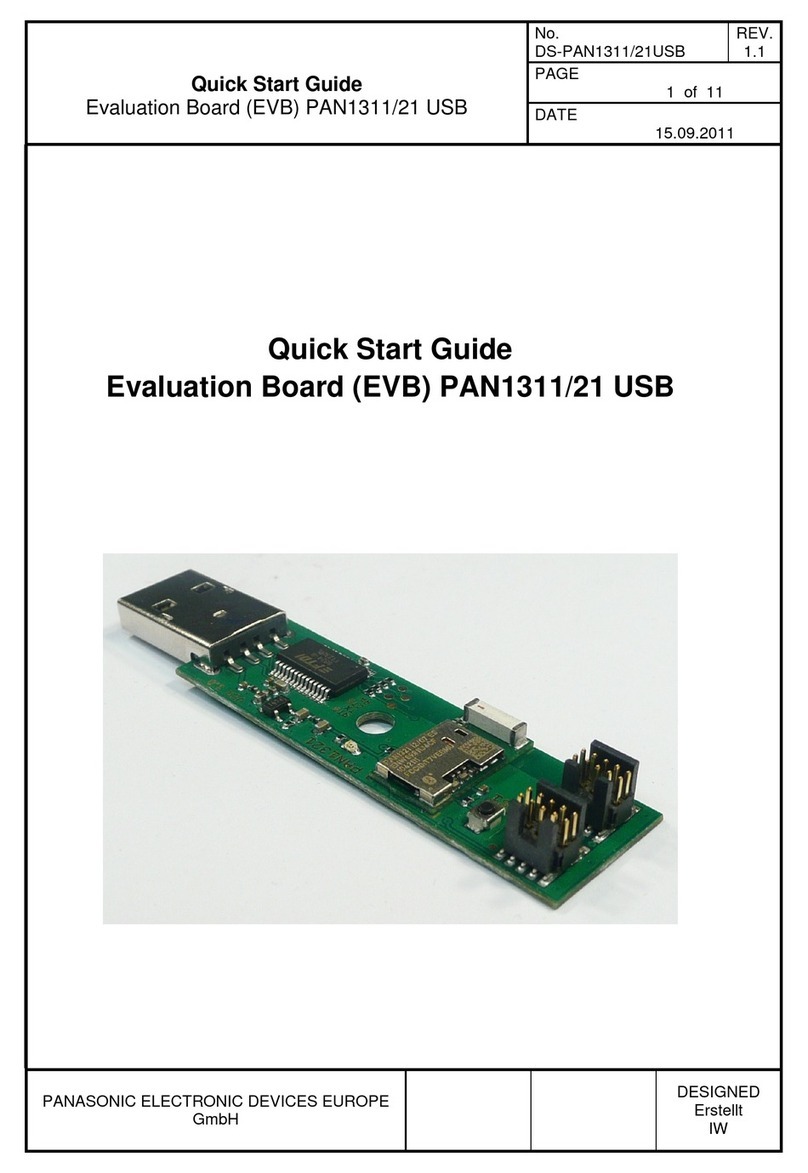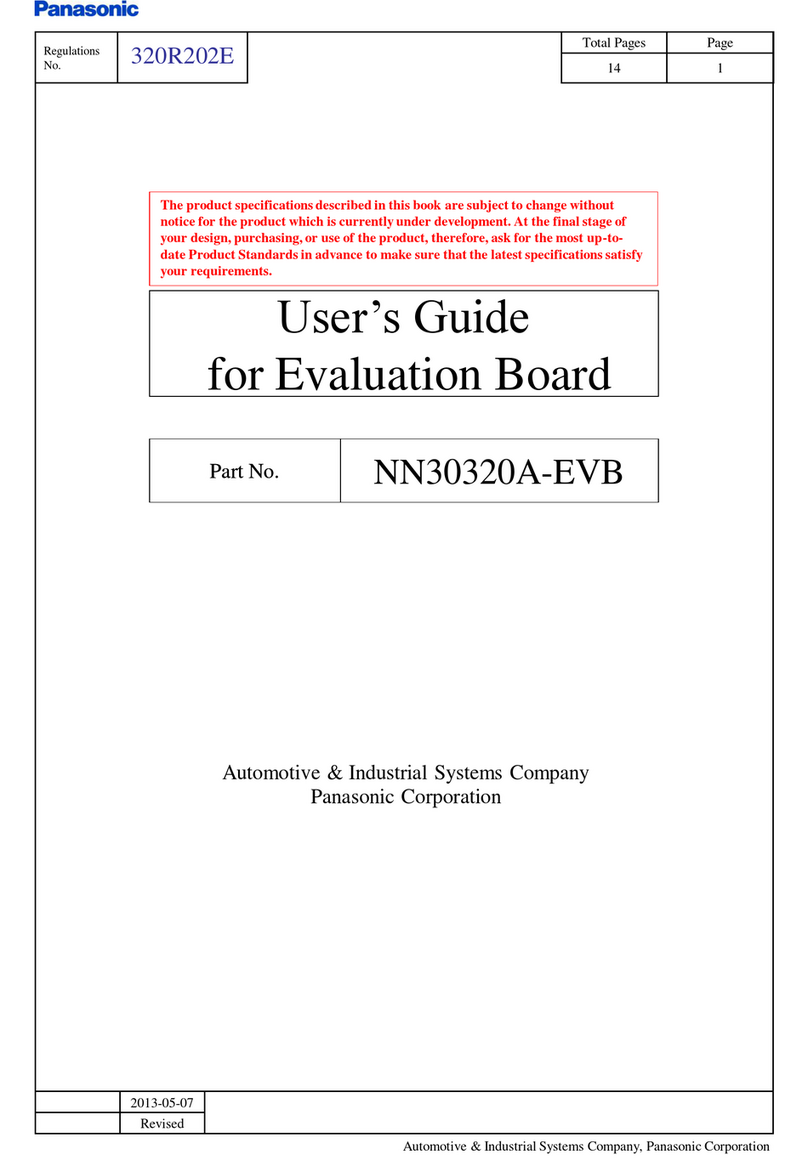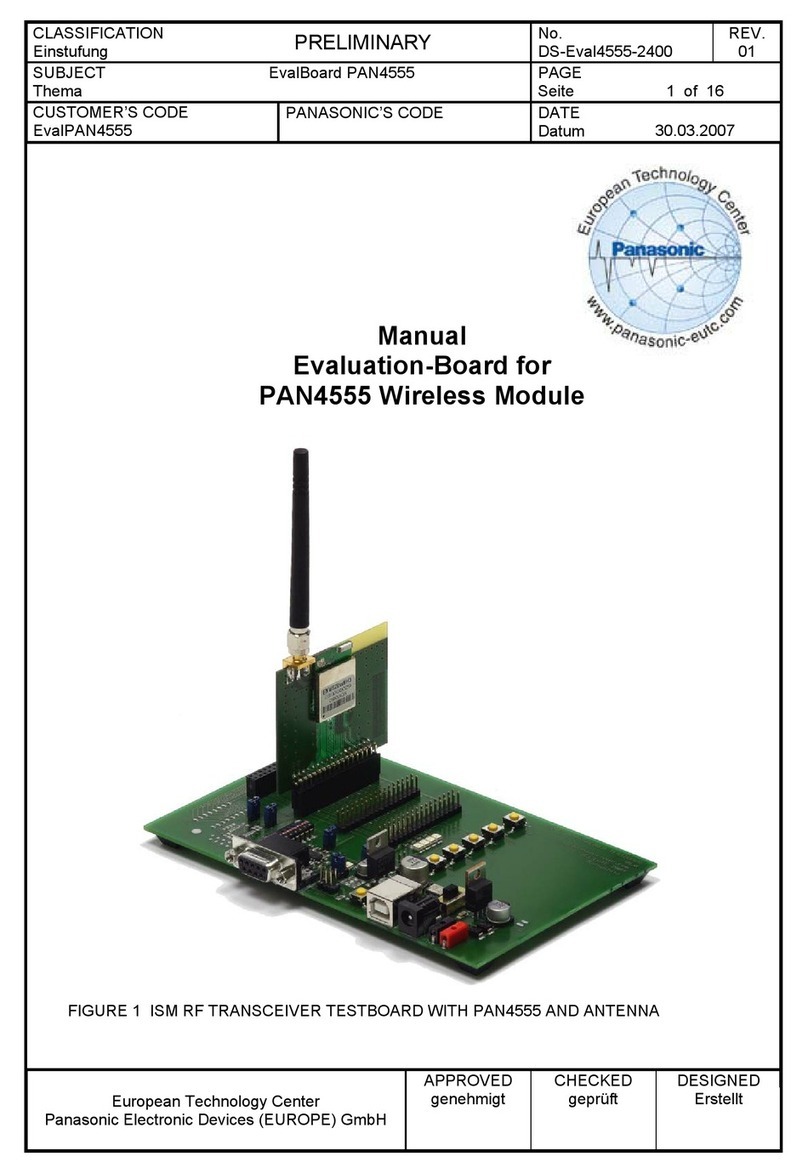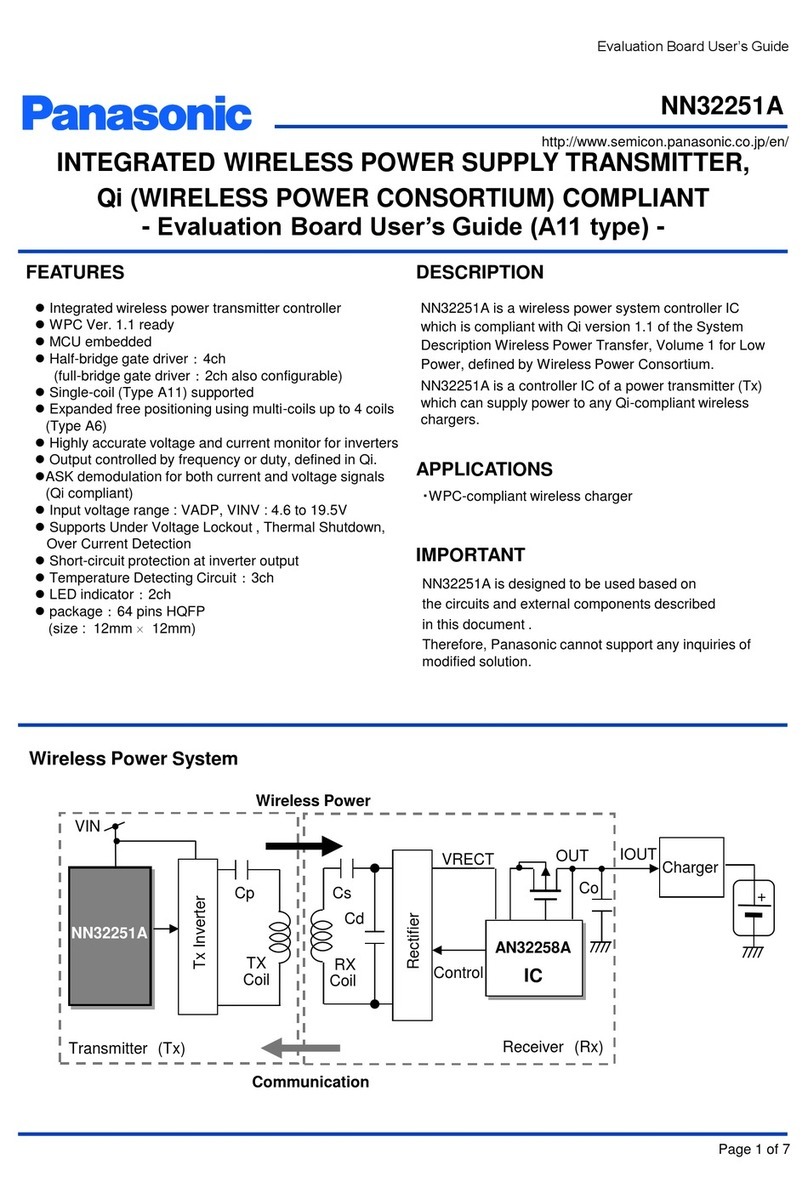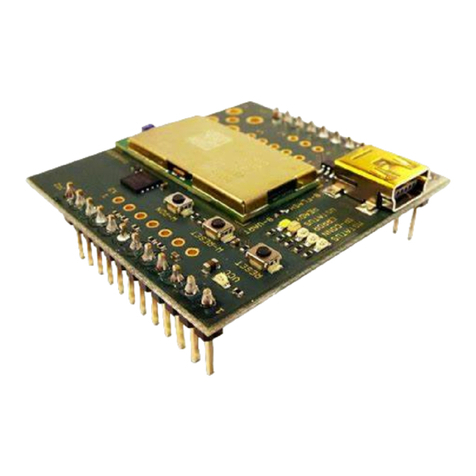
PGA26E07BA-SWEVB008 Ver. 1.2
PGA26E07BA-SWEVB008
Half Bridge Evaluation Board consisting:
1. PGA26E07BA 600V 70mΩX-GaN Power Transistor
2. AN34092B Single channel X-GaN Gate Driver IC
3. General Purpose Half Bridge Isolator
The products and product specifications described in the
document are subject to change without notice for modification
and/or improvement. At the final stage of your design,
purchasing, or use of the products, please request for the up-to-
date Product Standards in advance to ensure that the latest
specifications meet your requirements.
Panasonic Semiconductor Solutions Co. Ltd.
1 Kotari-yakemachi, Nagaokakyo, Kyoto 617-8520, Japan
http://www.semicon.panasonic.co.jp/en/
The products and product specifications described in
the document are subject to change without notice for modification
and/or improvement. At the final stage of your design, purchasing,
or use of the products, therefore, ask for the most up-to-date
Product Standards in advance to make sure that the latest
specifications satisfy your requirements.
As of March, 2017
Panasonic Industrial Devices
Sales Company of America
Two Riverfront Plaza, 7th Floor
Newark, NJ, 07102, United States
800-344-2112
na.industrial.panasonic.com
Panasonic
Semiconductor Solutions Co., Ltd.
1 Kotari-yakemachi, Nagaokakyo,
Kyoto 617-8520, Japan
Tel. +81-75-951-8151
http://www.semicon.panasonic.co.jp/en

